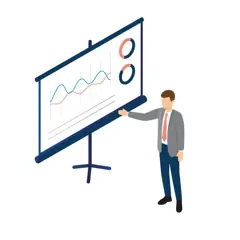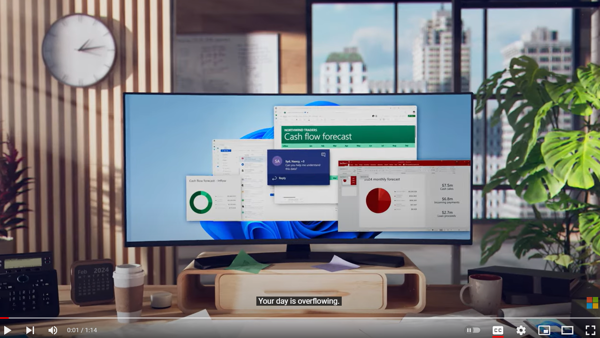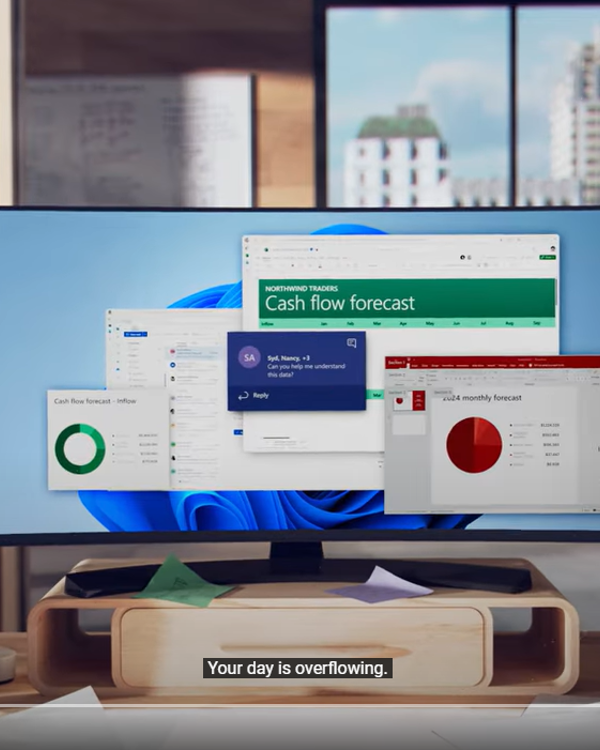Explore this eBook
Modern Finance
Turn old habits into fresh opportunities with Dynamics 365 Finance and Operations
Tabel of contents


Rethinking finance transformation: A smarter, faster path for P&C Insurers
Management Summary
In today’s rapidly evolving insurance landscape, Property and Casualty (P&C) insurers face growing pressure to transform their finance functions into strategic enablers. However, many still rely on fragmented systems, legacy processes, and delayed insights. This eBook by Aptitude Software and HSO, in partnership with Microsoft, outlines a smarter, faster approach to finance transformation—one that avoids the cost and complexity of traditional ERP overhauls.
Key findings from global research reveal that 70% of insurers are still in the early stages of financial transformation, lagging behind other sectors in AI usage and digital maturity. The report identifies three major pillars of transformation:
The eBook highlights case studies from leading insurers that have achieved measurable benefits, including faster financial closes, better compensation management, and enhanced revenue recognition. It also showcases how solutions like Aptitude Fynapse, Dynamics 365, and Power Platform drive agility through modular, scalable implementations tailored to insurance needs.
Finally, the report urges insurers to shift from big-bang ERP deployments to agile, iterative transformation, with faster time to value, reduced risk, and finance-led system ownership.
Explore this eBook
Rethinking finance transformation
2Reimagining Transformation: High Impact, Low Cost
3The state of Insurance
4Modern Finance for P&C Insurers
5Unlocking data
6Unlocking digital
7Unlocking AI
8Success story: US Insurer
9A more agile approach to finance change
10About HSO and Aptitude


Reimagining Transformation: High Impact, Low Cost
What if we said P&C Insurers could avoid a $50M+, five-year technology transformation program and still wind up with a unified data foundation, automation, and an empowered Finance team? Would you believe us?
To compete in an ever-changing environment, Property and Casualty (P&C) Insurance companies rely on their Finance teams for strategic insights and operational resilience. However, Finance functions have yet to reach their full potential and often fall short of driving significant strategic value.
Challenges can stem from growth through acquisition, complex legacy architectures, disparate teams, and decentralized data and processes. Additionally, the General Ledger might hold data in aggregation, but the business lacks a real-time view of payables and receivables.
Finally, complex product portfolios and subsidiary landscapes can make it difficult to see how capital flows through the business.
In this eBook, we’ll show you how HSO & Aptitude Software have helped P&C Insurers avoid expensive, big-bang transformation programs with a best of breed technology approach while unlocking data, digital automation and AI to help Finance teams deliver strategic business value.
Transforming financial operations for leading Insurers

Delivered concurrent multi-GAAP processing for different close calendars and centralized management of all accounting processes.

Achieved a dynamic continuous close process allowing the Insurer to generate their required set of financial statements on demand, at any time.

Gained full visibility into settled accounts, streamlined carrier statement matching and settlement processes and established a seamless feed for revenue reporting


The state of Insurance
Benchmarking Insurance on the Path to Autonomous Finance
To better understand where CFOs and their teams are in their journey to Autonomous Finance, Aptitude, Microsoft and HSO, commissioned third-party research that surveyed Finance and IT professionals across the globe. The focus was on understanding current priorities and challenges, AI usage, time associated with various tasks and overall approach to transformation. The answers placed teams on a continuum ranging from Traditional to Autonomous Finance.
Here, we’ve pulled out Insurance-specific results and indicated how they compare to their peers in Banking, Media, CPG/Retail, Manufacturing and Platforms.
In the Benchmark study, nearly 70% of surveyed Insurers placed their finance function at either the Traditional or Integrated stages, which means they have a long way to go to reach Autonomous Finance.
When looking at their AI usage compared other industries, Insurance came in dead last. They fared better in comparison in their Automation efforts, coming in at number two and were in the middle of the pack when it came to Data Readiness.
#6
Insurers ranked 6th out of 6 on AI usage.
#2
Insurers ranked 2th out of 6 on Automation.
#4
Insurers ranked 4th out of 6 on Data Readiness.
28%
39%
22%
11%
Insurance CFOs want to spend more time on:



...and less time on:



Key Insights
Quick Stats


Modern Finance for P&C Insurers
Empowering Finance Through Industry-Specific Innovation
Transforming Finance from a reactive, back-office function into a strategic driver of business success requires more than technology—it demands a clear, methodical approach rooted in expertise and industry knowledge.
Aptitude and HSO bring together a unique combination of software solutions, insurance-specific IP and accelerators, and a proven implementation methodology that stands apart from traditional, industry-agnostic ERP vendors.
Together, these steps form the backbone of a strategy to empower Finance teams, streamline operations, and enable a truly modern, autonomous finance function.
When we talk to our P&C clients about the problems we’ve solved for them they reference the delivery of key finance capabilities below:
Key Finance Capabilities
On the subsequent pages, we dive into some of these areas in more detail.


Unlocking data
Data is the lifeblood of autonomous finance, yet many P&C Insurers struggle to harness its full potential. Siloed systems, inconsistent formats, and poor-quality data are common barriers that impede strategic decision-making.
Managing liquidity, or “float,” is a major challenge for Insurers. While investing this float can generate significant revenue, traditional systems delay critical data, leaving CFOs with narrow windows for investment decisions. By the time policy and admin systems complete calculations, it’s often too late to make effective investment decisions.
Modern finance platforms like Fynapse provide real-time data processing, enabling Insurance companies to capitalize on midday trading opportunities. With a real-time finance data management platform, CFOs can see midday positions and determine if they have extra liquidity that can be invested immediately, maximizing revenue generation.
Another common issue for Insurance CFOs is the lack of granularity in financial data. P&C Insurers typically receive highly summarized information from their policy and administrative systems. Delayed or batch processing means it’s often too late to act on, making it difficult to quickly identify anomalies, emerging risks, or opportunities in specific geographies or segments.
A modern finance data management platform can change this narrative. These platforms allow for detailed, real-time data analysis, providing finance teams with the ability to pinpoint trends, risks, or opportunities as they happen. This empowers the office of the CFO to act swiftly, mitigating risks and seizing opportunities without waiting for the end-of-period data reconciliation.
According to the 2024 Insightsoftware Finance Trends Report, 75% of finance teams spend 6 hours per week recreating financial reports, amounting to 300 hours per year.


Unlocking digital
Unlocking digital focuses on modernizing financial workflows through digital tools and automation. While unlocking data provides the raw material, digital transformation refines and applies it, turning information into actionable insights.
Establishing a continuous close
For finance teams, the financial close process is one of the most critical – and often one of the most challenging – responsibilities. The speed of your close not only determines when results are available but also directly impacts the CFO’s ability to make timely, informed decisions that drive capital investment and business decisions.
According to the 2024 Global Autonomous Finance Benchmark, a striking 58% of finance leaders revealed it takes up to 5 days to close their books, while only 7% have achieved a continuous close. These findings highlight the urgent need for solutions that simplify and accelerate the close process.
With Fynapse, you gain confidence and efficiency in your financial operations, redefining what’s possible for the close process.
Traditional finance teams spend countless hours on manual processes like reconciliations, report generation, and compliance checks. These tasks, while essential, consume valuable time and resources that could be better spent on strategic initiatives. Automation tools can help address these inefficiencies. Key capabilities include:
In the Autonomous Finance survey, 50% of global respondents stated that Finance self-service reporting was either non-existent or limited to a small group of users. In the Insurance sector that number was even higher with 56% reporting no or limited access to self-service reporting.
Modern finance isn’t confined to the accounting department - it intersects with sales, operations, and other business units. Unlocking digital capabilities improves cross-departmental collaboration, enabling:


Unlocking AI
The final step is Unlocking AI, where organizations move beyond efficiency and begin to leverage artificial intelligence for strategic advantage.
AI doesn’t work magic - it works with data. And in Finance, that data needs special preparation. The Aptitude and HSO approach addresses foundational data challenges, allowing finance to use AI to transform data from a historical record into a predictive tool enabling finance teams to anticipate trends, mitigate risks, and drive growth.
No two organizations are alike which is why companies need the customization capabilities of Microsoft’s
Copilot Studio. By tailoring AI functionalities to specific business needs, organizations can:
Unlocking AI is not a one-time initiative—it’s a journey. Aptitude and HSO help organizations scale their AI
capabilities over time, ensuring that systems remain adaptable as business needs evolve. This includes:
AI-powered decision making
AI copilots like those in Microsoft Dynamics 365 revolutionize decision-making by providing instant access to complex insights.
AI doesn’t work magic—it works with data.
Say for example, that your CFO presents an ambitious target that AI will cut forecasting time by 70% and increase accuracy by 25%. But months and significant investment later, your Finance team is still wrangling data before Al can generate even basic insights that are already clear to you. This isn't a failure of AI as a technology—it's a failure in your data foundation. *
Ben Wright
Principal Solution Consultant, Aptitude Software


Success story
US Insurer
A leading US Insurer partnered with HSO, Microsoft, and Aptitude Software to modernize its finance department.
The company operated with a patchwork of systems: multiple CRM platforms, various back-office accounting tools, and a custom-built commissions solution that struggled under the strain of increased demand. This fragmented approach not only hindered their efficiency but also affected their ability to attract and retain talent, a critical factor in their acquisition strategy.
Their goal was clear: modernize their operations to improve the producer experience by ensuring timely and accurate compensation, automate and accelerate business processes, and build a scalable infrastructure to support future growth.
The transformation included
By implementing this unified solution, the company is transforming its finance department from a traditional back-office function into a strategic partner, significantly enhancing corporate performance and driving their ambitious growth plans.
This transformation will boost the Insurer’s agility, accuracy, and transparency, enabling them to respond quickly to market changes and customer demands.


A more agile approach to finance change
The Global Autonomous Finance Benchmark found that for 60% of respondents, it took three or more years to experience value from their transformation efforts.
It’s clear that the traditional model of finance transformation – characterized by years of planning, complex implementations and massive upfront investments – doesn’t work. What companies need instead is a more agile approach that focuses on rapid, incremental and ongoing transformation.
They need transformation that delivers a shorter time to value, a lower cost of delivery and a solution that not only meets their needs now but also grows with them. So how do organizations shift to a more agile approach to finance change? In part, through a focus on automating data activities, faster solution configuration and incremental change.
Many finance transformation projects stall due to incomplete data preparation, which can account for 80% of the effort. Solutions like Fynapse that use Extract, Load, Transform (ELT) accelerate progress by allowing raw data to be enriched within the system, reducing time to value. Automated regression testing and AI-driven configuration further streamline the process, minimizing delay
Rapid finance solution configuration accelerates time to market, enhances agility, and cuts implementation costs. Faster, even automated, setup enables businesses to adapt quickly to market shifts, regulations, and growth opportunities while optimizing workflows and gaining critical insights sooner.
However, large ERP systems often lack finance-specific capabilities, requiring extensive IT-led configuration that slows progress. Reducing configuration complexity—both at setup and throughout ongoing adjustments—lowers implementation time, frees finance resources, and empowers finance teams to manage the system independently, giving them greater control over business direction.
The market is lacking a viable alternative to large ERP systems. Organizations need composable, modular solutions that support small, iterative projects and allow finance teams to quickly show success and win buy-in. Solutions that support quick changes and the ability to see results in real time are faster and less risky and can win over leadership teams that were previously intimidated by large scale change. In fact, when smaller use cases are delivered more quickly, adoption tends to increase, and excitement around the new system is sustained.


About HSO and Aptitude Software
CFOs, controllers, and finance leaders in the P&C Insurance industry face constant pressure to optimize revenue streams while managing a delicate balance between risk and liquidity. As the industry continues to evolve, there is a growing demand for faster, more accurate financial insights.
Aptitude Software and HSO combine Insurance-specific software solutions and deep implementation experience to deliver innovative solutions that deliver ROI quickly.

Modern Finance
Turn old habits into fresh opportunities with Dynamics 365 Finance and Operations
To learn more about how HSO and Aptitude Software can deliver results for your Finance team, request a demo today.
Large enough to serve, small enough to care
HSO offers global delivery capabilities alongside 24/7 managed services to expedite business transformations for multinational corporations. Our unified global delivery methodology and template approach ensure consistent implementations worldwide, enabling cost-effective solutions with predictable outcomes.
HSO is a full service Microsoft Partner, having achieved all six Microsoft Cloud Partner Program Solution Designations, with each designation being anchored on the Microsoft Cloud: Business Applications, Data & AI (Azure), Digital App & Innovation (Azure), Infrastructure (Azure), Modern Work, and Security.
HSO develops solutions for our customers that leverage the latest cloud and AI technologies from Microsoft. Our industry-focused products address the vertical and horizontal needs of the markets we operate in, accelerating our customers' digital transformation and enabling them to become digital leaders in their industry.


HSO by the numbers: our history is our strength
We, and third parties, use cookies on our website. We use cookies to keep statistics, to save your preferences, but also for marketing purposes (for example, tailoring advertisements). By clicking on 'Settings' you can read more about our cookies and adjust your preferences. By clicking 'Accept all', you agree to the use of all cookies as described in our privacy and cookie policy.
Purpose
This cookie is used to store your preferences regarding cookies. The history is stored in your local storage.
Cookies
Location of Processing
European Union
Technologies Used
Cookies
Expiration date
1 year
Why required?
Required web technologies and cookies make our website technically accessible to and usable for you. This applies to essential base functionalities such as navigation on the website, correct display in your internet browser or requesting your consent. Without these web technologies and cookies our website does not work.
Purpose
These cookies are stored to keep you logged into the website.
Cookies
Location of Processing
European Union
Technologies Used
Cookies
Expiration date
1 year
Why required?
Required web technologies and cookies make our website technically accessible to and usable for you. This applies to essential base functionalities such as navigation on the website, correct display in your internet browser or requesting your consent. Without these web technologies and cookies our website does not work.
Purpose
This cookie is used to submit forms to us in a safe way.
Cookies
Location of Processing
European Union
Technologies Used
Cookies
Expiration date
1 year
Why required?
Required web technologies and cookies make our website technically accessible to and usable for you. This applies to essential base functionalities such as navigation on the website, correct display in your internet browser or requesting your consent. Without these web technologies and cookies our website does not work.
Purpose
This service provided by Google is used to load specific tags (or trackers) based on your preferences and location.
Why required?
This web technology enables us to insert tags based on your preferences. It is required but adheres to your settings and will not load any tags if you do not consent to them.
Purpose
This cookie is used to store your preferences regarding language.
Cookies
Why required?
We use your browser language to determine which language to show on our website. When you change the default language, this cookie makes sure your language preference is persistent.
Purpose
This service is used to track anonymized analytics on the HSO.com application. We find it very important that your privacy is protected. Therefore, we collect and store this data anonymously on our own servers. This cookie helps us collect data from HSO.com so that we can improve the website. Examples of this are: it allows us to track engagement by page, measuring various events like scroll-depth, time on page and clicks.
Cookie
Purpose
With your consent, this website will load Google Analytics to track behavior across the site.
Cookies
Purpose
With your consent, this website will load the Google Advertising tag which enables HSO to report user activity from HSO.com to Google. This enables HSO to track conversions and create remarketing lists based on user activity on HSO.com.
Possible cookies
Please refer to the below page for an updated view of all possible cookies that the Google Ads tag may set.
Cookie information for Google's ad products (safety.google)
Technologies Used
Cookies
Purpose
With your consent, we use IPGeoLocation to retrieve a country code based on your IP address. We use this service to be able to trigger the right web technologies for the right people.
Purpose
With your consent, we use Leadfeeder to identify companies by their IP-addresses. Leadfeeder automatically filters out all users visiting from residential IP addresses and ISPs. All visit data is aggregated on the company level.
Cookies
Purpose
With your consent, this website will load the LinkedIn Insights tag which enables us to see analytical data on website performance, allows us to build audiences, and use retargeting as an advertising technique. Learn more about LinkedIn cookies here.
Cookies
Purpose
With your consent, this website will load the Microsoft Advertising Universal Event Tracking tag which enables HSO to report user activity from HSO.com to Microsoft Advertising. HSO can then create conversion goals to specify which subset of user actions on the website qualify to be counted as conversions. Similarly, HSO can create remarketing lists based on user activity on HSO.com and Microsoft Advertising matches the list definitions with UET logged user activity to put users into those lists.
Cookies
Technologies Used
Cookies
Purpose
With your consent, this website will load the Microsoft Dynamics 365 Marketing tag which enables HSO to score leads based on your level of interaction with the website. The cookie contains no personal information, but does uniquely identify a specific browser on a specific machine. Learn more about Microsoft Dynamics 365 Marketing cookies here.
Cookies
Technologies Used
Cookies
Purpose
With your consent, we use Spotler to measures more extensive recurring website visits based on IP address and draw up a profile of a visitor.
Cookies
Purpose
With your consent, this website will show videos embedded from Vimeo.
Technologies Used
Cookies
Purpose
With your consent, this website will show videos embedded from Youtube.
Cookies
Technologies Used
Cookies
Purpose
With your consent, this website will load the Meta-pixel tag which enables us to see analytical data on website performance, allows us to build audiences, and use retargeting as an advertising technique through platforms owned by Meta, like Facebook and Instagram. Learn more about Facebook cookies here. You can adjust how ads work for you on Facebook here.
Cookies
Purpose
With your consent, we use LeadInfo to identify companies by their IP-addresses. LeadInfo automatically filters out all users visiting from residential IP addresses and ISPs. These cookies are not shared with third parties under any circumstances.
Cookies
Purpose
With your consent, we use TechTarget to identify companies by their IP address(es).
Cookies
Purpose
With your consent, we use this service provided by uMarketingSuite to run A/B tests across the HSO.com application. A/B testing (also called split testing) is comparing two versions of a web page to learn how we can improve your experience.
Purpose
With your consent, we use this service provided by uMarketingSuite to personalize pages and content across the HSO.com application. Personalization helps us to tailor the website to your specific needs, aiming to improve your experience on HSO.com.
Purpose
With your consent, we use ZoomInfo to identify companies by their IP addresses. The data collected helps us understand which companies are visiting our website, enabling us to target sales and marketing efforts more effectively.
Cookies